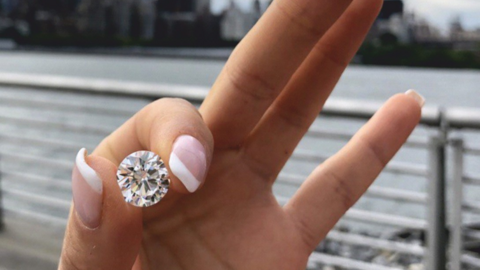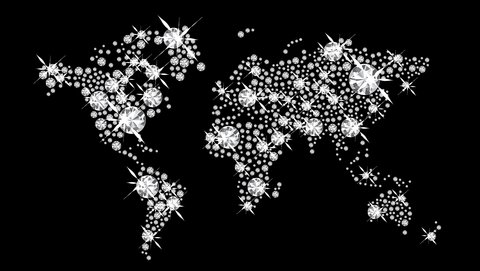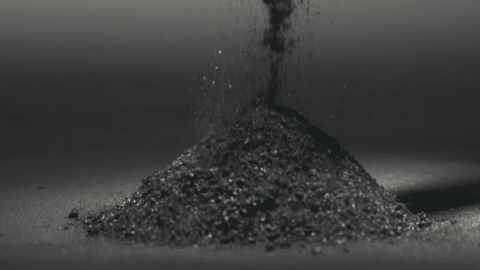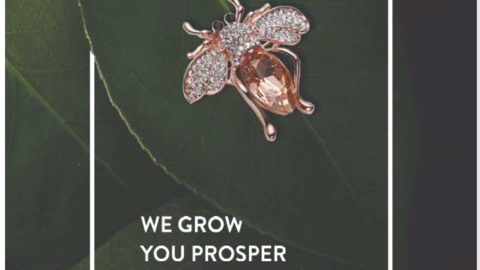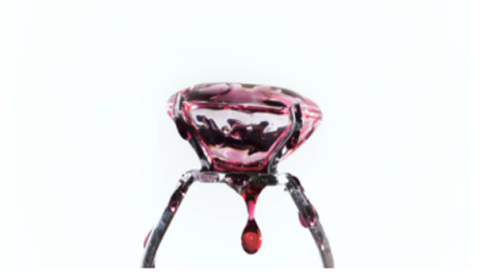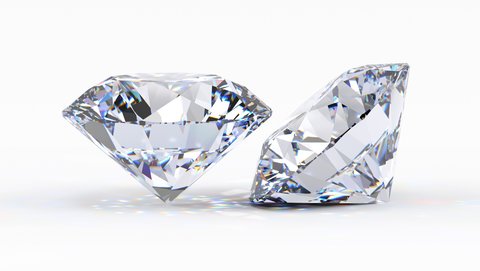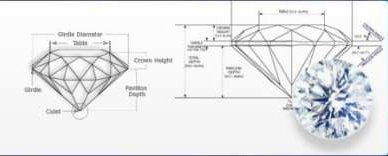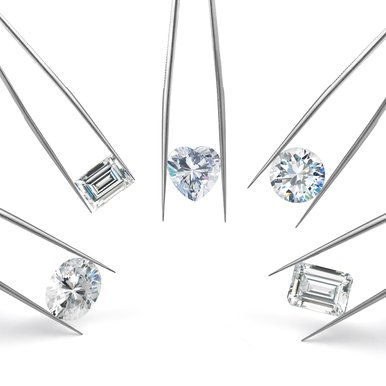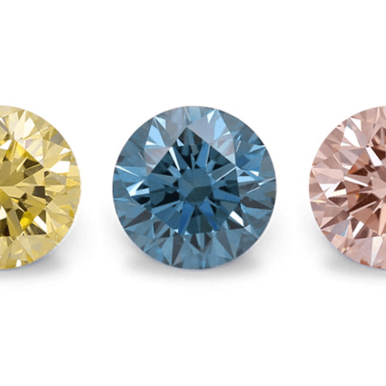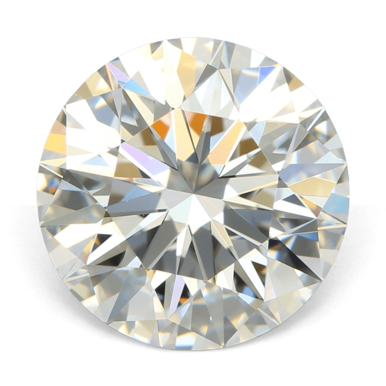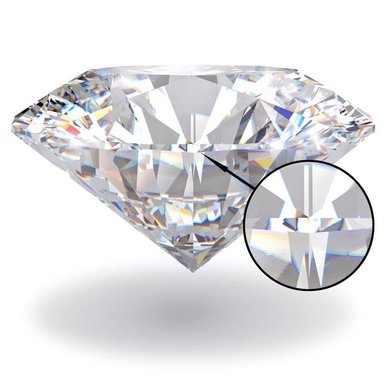
Old European Cut Lab Grown Diamonds: A Timeless Vintage Treasure
Old European Cut Lab-Grown Diamonds
The Old European Cut diamond represents one of history's most captivating diamond cutting styles, embodying the artistry and craftsmanship of a bygone era. These spectacular vintage gems, hand-crafted by skilled diamond cutters of the late 19th and early 20th centuries, have experienced a remarkable resurgence in popularity in recent years. With their distinctive round shape, unique faceting pattern, and incomparable romantic sparkle, Old European Cut diamonds offer today's jewelry enthusiasts an authentic connection to the past.
At Labrilliante, we specialize in recreating this timeless beauty with our lab-grown Old European Cut diamonds, combining vintage aesthetics with modern, sustainable practices. For those drawn to distinctive character and historical elegance in their fine jewelry, these magnificent stones provide the perfect blend of old-world charm and contemporary values.

What is an Old European Cut Diamond?
An Old European Cut diamond is a distinct vintage diamond cutting style that flourished between 1890 and 1930, serving as the precursor to today's modern round brilliant cut. These diamonds feature a perfectly round shape with 58 facets—the same number as modern round brilliants—but with dramatically different proportions and cutting techniques that create their unique visual appeal.
What truly sets Old European Cut diamonds apart is their handcrafted nature. Before the advent of modern precision cutting machinery, each diamond was meticulously shaped by skilled craftsmen using simple tools and remarkable expertise. This hand-cutting process resulted in diamonds with high crowns (the top portion), small tables (the flat facet on top), deep pavilions (the bottom portion), and a visible culet (the bottom facet that appears as a small circle when viewed from above).
The Old European Cut was designed to maximize a diamond's fire—the colorful flashes of light—rather than the white brilliance prioritized by modern cuts. When viewed under candlelight or soft lighting conditions common during their era, these diamonds display a warm, romantic glow and distinctive sparkle pattern that many find irresistibly charming. At Labrilliante, we've perfected the art of recreating these vintage characteristics in our lab-grown diamonds, offering the unique beauty of Old European Cuts with contemporary ethical benefits.
Key Features and Characteristics
Old European Cut diamonds possess several distinctive attributes that set them apart from their modern counterparts. At Labrilliante, we carefully craft our lab-grown Old European Cut diamonds to faithfully reproduce these cherished characteristics:
Key Features of Old European Cut Diamonds
| Feature | Old European Cut Characteristics |
|---|---|
| Shape and Outline | Perfectly round when viewed from above, though often with slight asymmetry due to hand-cutting |
| Facet Count | 58 facets, with larger, broader facets than modern cuts |
| Crown | Noticeably higher and more prominent than modern brilliant cuts |
| Table | Small table facet (approximately 40-45% of diameter) |
| Culet | Large, open, and visible culet that appears as a distinctive circle when viewed from above |
| Pavilion | Deeper cut pavilion for enhanced fire and color dispersion |
| Girdle | Thicker, often irregular girdle due to hand-cutting techniques |
| Symmetry | Charming asymmetry reflecting artisanal craftsmanship |
| Light Performance | Emphasizes fire (colored light) over brilliance (white light) |
| Color Appearance | Often enhances warmer color tones (I-K color range) |

These distinctive features combine to create a diamond with tremendous character and unique light performance. When light enters an Old European Cut diamond, it travels through the stone differently than in modern cuts, creating larger flashes of light and color rather than the uniform sparkle of contemporary diamonds. This results in a mesmerizing play of light that's particularly enchanting in candlelit or soft-lit environments.
At Labrilliante, we've found that many customers are drawn to the unique personality and romantic quality these characteristics impart. Our master cutters meticulously reproduce these vintage specifications using cutting-edge technology and sustainable lab-grown diamonds, ensuring each stone has the authentic character of a vintage gem with the ethical benefits of modern production.
History and Evolution
The Old European Cut diamond emerged during a fascinating period of diamond cutting innovation, bridging the gap between earlier cutting styles and the modern brilliant cut we know today.
The story begins in the late 19th century, when diamond cutters were transitioning from the Old Mine Cut (a squarish cut popular in the Georgian and early Victorian eras) to something more refined. As cutting techniques improved and understanding of light performance advanced, these artisans developed what we now call the Old European Cut. This transition represented a significant advancement in diamond cutting technology, as cutters began placing greater emphasis on mathematical proportions while still working entirely by hand.
The Old European Cut flourished during the late Victorian, Edwardian, and Art Deco periods (approximately 1890-1930), appearing in some of the most exquisite jewelry of these eras. Its popularity coincided with momentous historical and cultural shifts – from the Belle Époque to the Roaring Twenties – making these diamonds living connections to fascinating periods of history.
The eventual transition from Old European Cuts to modern round brilliants began in 1919 when mathematician Marcel Tolkowsky published his groundbreaking work "Diamond Design," which established the ideal proportions for maximizing a diamond's brilliance and fire. This mathematical approach to diamond cutting, combined with advancing technology, gradually led to the development of the modern round brilliant cut that dominates today's market.
At Labrilliante, we honor this rich heritage by recreating Old European Cut diamonds using lab-grown diamonds, preserving this important chapter in diamond history while embracing sustainable practices for the future.
Old European Cut vs. Other Cuts
Understanding how the Old European Cut compares to other popular diamond cuts helps appreciate its unique characteristics and appeal. At Labrilliante, we believe this knowledge empowers our customers to make informed decisions when selecting their perfect lab-grown diamond.
Old European Cut vs. Modern Round Brilliant
The Modern Round Brilliant has become today's standard diamond cut, but it differs significantly from its predecessor, the Old European Cut.
Comparison of Diamond Cuts
| Feature | Old European Cut | Modern Round Brilliant |
|---|---|---|
| Shape | Round | Round |
| Facets | 58 (larger, broader facets) | 58 (smaller, more precisely arranged facets) |
| Crown | High and domed | Lower and more angled |
| Table | Small (40-45% of diameter) | Larger (55-60% of diameter) |
| Culet | Large and visible | Pointed or very small (not visible to naked eye) |
| Pavilion | Deep | Shallower |
| Symmetry | Hand-cut with natural variations | Machine-cut with precise symmetry |
| Light Performance | More fire (colored flashes) | More brilliance (white light return) |
| Ideal Lighting | Candlelight, soft lighting | Modern bright lighting |
| Era | 1890-1930 | 1919-present |
The primary difference lies in their light performance: Old European Cuts were designed for candlelight and gas lighting, creating romantic, colorful flashes, while Modern Round Brilliants were mathematically optimized for the bright electric lighting common today, producing maximum brilliance and sparkle.
Old European Cut vs. Old Mine Cut
Many people confuse these two vintage cuts, but they have distinct differences:
Old European Cut vs. Old Mine Cut
| Feature | Old European Cut | Old Mine Cut |
|---|---|---|
| Shape | Round | Square or cushion-shaped with rounded corners |
| Era | 1890-1930 | Pre-1890 |
| Crown | High | Higher |
| Facet Pattern | More symmetrical | Less symmetrical |
| Culet | Large, but proportional | Very large |
| Development | Later development | Earlier predecessor |
At Labrilliante, we specialize in recreating these historical diamond cuts using lab-grown diamonds, preserving their unique beauty while offering modern benefits like consistent quality, ethical sourcing, and environmental sustainability.

Pros and Cons
When considering an Old European Cut diamond from Labrilliante, it's helpful to understand both the advantages and potential considerations of these distinctive stones.
Pros
- Unique Vintage Aesthetic: Old European Cut diamonds possess a romantic, vintage charm that's impossible to replicate with modern cuts. Their distinctive fire and sparkle pattern creates a warm, inviting appearance in jewelry pieces.
- Distinctive Fire and Light Performance: These diamonds were designed to maximize fire (colored light dispersion) rather than brilliance, creating larger, more dramatic flashes of color especially noticeable in candlelight and soft lighting.
- Character and Individuality: Due to their hand-cut nature, each Old European Cut diamond has subtle variations that give it a unique personality, unlike the precise uniformity of modern machine-cut diamonds.
- Eco-Friendly Option: At Labrilliante, our lab-grown Old European Cut diamonds combine vintage aesthetics with modern sustainability, offering an environmentally responsible choice without mining impact.
- Value Proposition: Our lab-grown Old European Cut diamonds often provide better value than natural equivalents, allowing customers to acquire larger stones with unique characteristics at competitive prices.
Cons
- Different Light Performance: Those accustomed to the brilliance of modern cuts may initially find the Old European Cut's different light behavior surprising. These diamonds shine best in softer lighting rather than harsh modern lighting.
- Visible Culet: The visible culet (appearing as a small circle when viewed from above) is historically accurate but may be unfamiliar to those only experienced with modern diamonds.
- Non-Standard Proportions: The high crown, small table, and deep pavilion differ from modern proportions, which means traditional diamond grading standards don't fully apply to these stones.
- Warm Color Enhancement: Old European Cuts tend to enhance warmer color tones, which may not suit those specifically seeking the icy-white appearance often preferred in modern diamonds.
At Labrilliante, we find that customers who appreciate history, character, and unique beauty are most drawn to our Old European Cut diamonds. Our expert gemologists are always available to help determine whether this distinctive cut aligns with your personal style and preferences.
Buying Guide & Value Considerations
When selecting an Old European Cut lab-grown diamond from Labrilliante, several important factors can help you find a stone that perfectly balances beauty, value, and authenticity.
What to Look For
Cut Proportions and Character: The most appealing Old European Cut diamonds feature:
- A high crown with a small table (approximately 40-45% of diameter)
- A visible but proportional culet
- A deep pavilion that creates dramatic fire
- Some slight asymmetry that reflects authentic hand-cutting techniques
Color Considerations: While modern diamonds often prioritize colorlessness, Old European Cuts actually showcase warmer tones beautifully. At Labrilliante, we offer:
- Colorless options (D-F) for those seeking a brighter appearance
- Very slight warm tones (G-I) that enhance the vintage character and fire
- Warmer options (J-K) that beautifully emulate the candlelit glow of antique diamonds
Clarity Matters: Our lab-grown Old European Cut diamonds typically offer superior clarity compared to mined antique diamonds:
- VS1-VS2 clarity provides a clean appearance while maintaining value
- Slight inclusions can actually enhance authenticity in a vintage-style diamond
Size and Proportion: The unique cutting style of Old European Cut diamonds means they often appear larger face-up than their modern counterparts of the same carat weight, offering excellent visual impact.
Value Considerations
Several factors influence the value of our lab-grown Old European Cut diamonds:
Cutting Precision: Creating an authentic-looking Old European Cut requires exceptional skill. At Labrilliante, our master cutters painstakingly craft each stone to historical specifications, maintaining the perfect balance between authenticity and beauty.
Ethical Premium: Our lab-grown diamonds provide peace of mind through sustainable origins, free from mining-related ethical and environmental concerns—an increasingly important consideration for modern consumers.
Rarity Balance: While natural Old European Cut diamonds are becoming increasingly rare, our lab-grown versions offer the perfect combination of vintage aesthetics and modern accessibility.
Long-term Value: As interest in vintage and period-inspired jewelry continues to grow, distinctive cuts like our Old European Cut diamonds remain highly sought after for their unique beauty and historical connections.

Care and Setting Recommendations
Proper care and the right setting choice can significantly enhance both the beauty and longevity of your lab-grown Old European Cut diamond from Labrilliante. Here are our expert recommendations:
Care Guidelines for Old European Cut Diamonds
While lab-grown diamonds are just as durable as their natural counterparts, Old European Cut diamonds benefit from some special care considerations:
- Gentle Cleaning: Use a soft brush, mild soap, and warm water for regular cleaning. The higher crown and deeper pavilion can sometimes trap more soap residue, so thorough rinsing is important.
- Professional Maintenance: Schedule occasional professional cleanings with Labrilliante to ensure your diamond maintains its distinctive fire and sparkle.
- Avoid Harsh Chemicals: Keep your diamond away from chlorine, bleach, and other harsh household chemicals that can damage the metal settings.
- Storage Considerations: Store your Old European Cut diamond jewelry separately from other pieces to prevent scratching, ideally in a soft-lined box or pouch.
Ideal Settings for Old European Cut Diamonds
The unique proportions and vintage character of Old European Cut diamonds shine best in complementary settings:
- Bezel Settings: A metal rim that fully surrounds the diamond provides excellent protection for the higher crown while showcasing the stone's vintage character.
- Cathedral Settings: These elegant, arch-like settings elevate the diamond, allowing maximum light entry while providing a timeless, sophisticated look.
- Vintage-Inspired Prong Settings: Six-prong or crown-style prong settings offer secure stone placement while emphasizing the diamond's period aesthetic.
- Halo Settings: A circle of smaller accent stones can beautifully complement the round shape of an Old European Cut diamond, enhancing its presence.
- Antique Reproduction Settings: Settings that faithfully recreate Victorian, Edwardian, or Art Deco designs provide the most historically authentic presentation.
At Labrilliante, we offer a wide range of custom setting options specifically designed to highlight the unique beauty of our lab-grown Old European Cut diamonds, ensuring your jewelry piece honors both historical authenticity and contemporary sustainability values.
FAQ Old European Lab Grown Diamonds
Not necessarily. At Labrilliante, our lab-grown Old European Cut diamonds often provide better value than modern cuts of similar size. While natural antique Old European Cut diamonds can command premium prices due to their rarity and historical significance, our lab-grown versions offer the same vintage aesthetic at competitive prices, frequently allowing you to acquire a larger stone than you might with a modern cut.
A genuine Old European Cut diamond will have four key identifying features: a small table facet (40-45% of diameter), a high crown, a deep pavilion, and a visible culet when viewed from above. At Labrilliante, our gemologists use these historical specifications when creating our lab-grown Old European Cut diamonds, ensuring authenticity in every detail, from facet pattern to overall proportions.
They don't sparkle less—they sparkle differently. Old European Cut diamonds were designed for candlelight, emphasizing colorful fire over white brilliance. In softer lighting, they often display more dramatic, colorful flashes than modern cuts. At Labrilliante, we find many customers actually prefer this romantic, distinctive light performance once they see it in person.
Yes! At Labrilliante, we've perfected the technique of recreating authentic Old European Cut characteristics in lab-grown diamonds. By combining precise historical measurements with cutting techniques that intentionally incorporate slight asymmetries, we produce stones with all the character and charm of antique diamonds, but with modern ethical benefits and consistent quality.
Many celebrities have embraced vintage and antique-inspired jewelry featuring Old European Cut diamonds. From red carpet appearances to engagement rings, these distinctive stones have adorned the hands of stars seeking unique alternatives to conventional diamond jewelry. The romantic fire and historic character of these diamonds make them popular choices for those wanting something beyond the ordinary.
Yes, they often do. Due to their different proportions—particularly their higher crowns and deeper pavilions—Old European Cut diamonds frequently appear larger face-up than modern round brilliants of identical carat weight. At Labrilliante, customers are often pleasantly surprised by the impressive visual presence our Old European Cut diamonds offer relative to their actual carat weight.
Absolutely. For couples seeking a distinctive, romantic alternative to conventional engagement rings, Old European Cut diamonds offer unique character, vintage charm, and excellent durability. Their timeless appeal and connection to the romantic eras of the past make them increasingly popular engagement ring choices. At Labrilliante, our lab-grown versions provide additional peace of mind through their sustainable origins.
Lighting dramatically influences how an Old European Cut diamond displays its beauty. These diamonds were designed for the gas lamps and candlelight of their era, where they produce romantic, colorful fire. In soft, warm lighting (restaurants, evening settings), they absolutely shine with distinctive flashes of color. In modern bright lighting, they still perform beautifully but with a different character than modern cuts—more dramatic fire rather than the uniform sparkle of contemporary diamonds.


